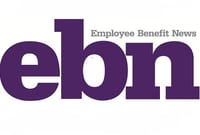 We humans are not islands. Everything we do affects the people, neighborhoods and ecosystems around us in some way. One act of kindness for another person can inspire the recipient to perform a good deed for someone else, and through a ripple effect, many others can benefit.
We humans are not islands. Everything we do affects the people, neighborhoods and ecosystems around us in some way. One act of kindness for another person can inspire the recipient to perform a good deed for someone else, and through a ripple effect, many others can benefit.
In 2000, Hollywood helped create widespread awareness of this “pay it forward” concept via the feature film of the same name. At the beginning of the movie (based on the novel Pay It Forward by Catherine Ryan Hyde), Kevin Spacey’s character inspires one of his students, played by Haley Joel Osment, to “pay it forward,” and the latter’s good deeds end up touching the lives of many people.
So what does this have to do with retirement? On average, Americans change jobs 7.4 times during their working lives, according to the Employee Benefit Research Institute (EBRI). As the central players in our large and diverse retirement system, plan sponsors can use the “pay it forward” concept to help millions of workers—when they offer portability solutions that make it easy for new, longtime and former participants to move their former 401(k)s and small-balance IRAs to their current employers’ plans as quickly as possible. These best practices help Americans save more for retirement by facilitating lifetime participation in 401(k) plans.
Consistent 401(k) plan participation significantly increases retirement savings. A recent study conducted by EBRI and the Investment Company Institute (ICI) found that at year-end 2013, the average account balance of consistent 401(k) participants was more than twice that of all the participants in the organizations’ 401(k) database. Also, the median balance among consistent 401(k) participants was over four times the median balance for all participants in the EBRI/ICI database.
Create a ‘Pay It Forward’ Retirement System
Unfortunately, most plans don’t provide portability assistance for either their new hires or terminated participants, and the complexity of DIY account consolidation leads a lot of participants to cash out their 401(k)s or leave them behind when they change jobs. These are destructive decisions that can deplete retirement savings over the long term.
As fiduciaries, plan sponsors should seriously consider implementing portability solutions to help people avoid making these harmful decisions and incubate better retirement outcomes for all participants. “Pay it forward” works especially well for terminated participants. In one documented case of a mega-employer in the hospital services industry, portability solutions for its terminated participants resulted in a 50% reduction in cash-outs.
Fortunately, it’s easy for sponsors to incorporate portability solutions into their plans. The Plan Sponsor Council of America’s November 2013 study found that 98.4% of 401(k) plans can accept account roll-ins from other plans. Sponsors can further facilitate portability by actively encouraging current participants to roll in accounts they have left behind on former employers’ plans. They can also work with roll-in service providers to assist all participants with the account consolidation process, counsel participants against cashing out when changing jobs, and track down holders of stranded accounts.
In addition, by cutting cash-outs among their participants, sponsors can help more savings stay in the overall retirement system. According to the U.S. Government Accountability Office, $74 billion in assets leave the country’s retirement system every year, and 89% of this “leakage” is caused by cash-outs. EBRI estimates that a 50% reduction in leakage across the board would add $1.3 trillion to Americans’ total retirement savings over the course of 10 years—so every sponsor that reduces cash-outs among its participants makes a difference!
Taking these steps will create a pay-it-forward network of retirement-savings goodwill, helping many people beyond a sponsor’s current participants. When a participant’s retirement savings increases, his/her spouse, children and other relatives benefit, along with businesses the participant can patronize and charities he/she can support with the extra retirement income.
In the final scene of Pay It Forward, hundreds of people inspired by Haley Joel Osment’s character show up at his mother’s home holding candles. The aerial view of these candles against the night sky demonstrates just how big an impact the character had on his community. Sponsors can have the same Pay It Forward-like impact on American workers and their families by adopting portability solutions that encourage lifetime participation in 401(k) plans.
- Home
- Individuals
- Auto Portability
- Plan Sponsors
- The Small Account Problem
- RCH Portability Services
- Plan Sponsor Support
- The Missing Participant Problem
- What is a Missing Participant?
- Why Plan Sponsors Should be Concerned
- What Causes Missing Participants?
- The Magnitude of the Problem
- What Regulations Apply to Missing Participants?
- Sources of Uncertainty for Plan Sponsors
- Best Practices for Finding Missing Participants
- What to Look For in a Search Service
- Learn More About Missing Participants
- RCH's Missing Participant Search Service
- Terminating 401(k) Plans
- Participant Testimonials
- Due Diligence Material
- Contact Us
- Accountholders
- Company
- News & Information
- Login
